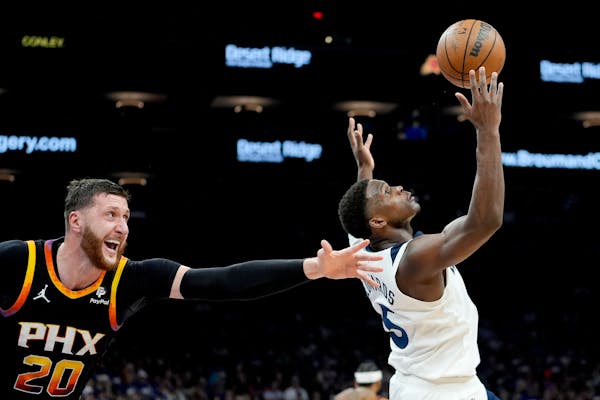After complaints from drivers and pressure from both cities and states, the app-based ride share firm Lyft announced Tuesday a more transparent pay system and a base weekly pay rate for its drivers.
After external fees, drivers will earn 70% of each passenger fare.
"It's a rock-solid floor. As a driver, if you're ever under 70 percent at the end of the week, you'll be paid the difference," said Lyft CEO David Risher.
The move makes Lyft the first rideshare company to guarantee a pay rate.
The issue has been a big one for drivers.
"No one knows what to expect in pay," said Eid Ali, president of the Minnesota Uber and Lyft Drivers Association. "That is why we have been trying to get something reliable — like how much we should be paid per minute or per mile."
Pay varies, which causes uncertainty, Ali said, adding drivers would like more information about the algorithm to understand, for example, why a driver gets paid $15 sometimes and $12 other times for driving a passenger from the airport to downtown Minneapolis.
It will take time and data to know for sure, but Lyft's new guarantee could offer "some clarity," which was not the case before. Still, it remains to be seen "how much the driver will benefit," said Ali, while taking a break Tuesday from a Minneapolis City Council hearing regarding minimum wage standards for Uber and Lyft drivers.
Lyft said it will start breaking down passenger fares on drivers' cellphone apps so they can see what the passenger paid, all fees, tip and the drivers' final share of the ride.
Mauricio Castaneda in Robbinsdale said Lyft's new pay guarantee sounds good in theory, but he wondered about what "external fees" Lyft would inject into each ride.
"Drivers don't want to work with them because the drivers don't make money. They don't pay us," he said. "That is why they decided to pay more."
The move might be too late to keep Castaneda, who plans to change professions as soon as he can.
The pay guarantee was in part to recruit and retain drivers, Lyft officials told Reuters. The company is in a heated competition for drivers with other rideshare companies, particularly the market leader, Uber.
Audrey Liu, executive vice president for customers, said the fees vary by municipality and state.
They include government taxes, airport and venue fees and commercial auto insurance premiums the company pays. Those premiums are separate from the auto insurance premiums that drivers are also required to pay.
"Last year, 24% of rider fares went toward these costs on average, with the majority going to commercial auto insurance," Lyft said in a statement. "And while we're working extremely hard to reduce external fees so drivers can earn more — helping drivers better understand them is an important first step."
Lyft's new policy also creates a system so drivers have options about which fares they take.
The new program comes after months of complaints and protests at MSP airport, Minneapolis City Hall and the State Capitol over what drivers called inadequate pay that prevented them from earning a proper living.
Late last year, Uber and Lyft agreed to pay $328 million to settle allegations that the companies withheld wages from drivers and did not provide paid sick leave in New York state, Reuters reported.
Under the new program, Lyft, which is the second largest rideshare company after Uber, guarantees that drivers will not only earn 70% or more of fares after fees but will be able to see a breakdown of how fares are split for the very first time.
"We've heard lots of feedback around consistent themes — earnings, deactivations, and safety — and we're taking action to address them," Risher said in a statement Tuesday.
Risher said company data showed that Lyft drivers earned a rough average of 88% of rider payments, after the external fees. But he acknowledged "an average isn't the full story for every driver."
In any given week last year, he said about 15 of every 100 drivers earned less than 70% of what riders paid. And two-thirds of drivers said that has happened to them at least once.
Six-year Twin Cities driver Yusuf Haji said some Lyft drivers actually earned only 30% to 50% of their total fares. He and others said that often they did not know before accepting a fare how much it would be worth.
Uber and Lyft enacted new $5 minimum fares last year and last month. That's still not enough, drivers said.
"If you really break it down it goes to 50 to 56 cents per mile," Haji said. "Is not enough [when you factor in] the cost of fuel and that we have to maintain our vehicles."
Includes reporting from Reuters.
